实验5:开源控制器实践——POX
一、实验目的
1. 能够理解 POX 控制器的工作原理;
2.通过验证POX的forwarding.hub和forwarding.l2_learning模块,初步掌握POX控制器的使用方法;
3.能够运用 POX控制器编写自定义网络应用程序,进一步熟悉POX控制器流表下发的方法。
二、实验环境
Ubuntu 20.04 Desktop amd64
三、实验要求
(一)基本要求
1. 搭建下图所示SDN拓扑,协议使用Open Flow 1.0,控制器使用部署于本地的POX(默认监听6633端口)

2. 阅读Hub模块代码,使用 tcpdump 验证Hub模块;
h1 ping h2
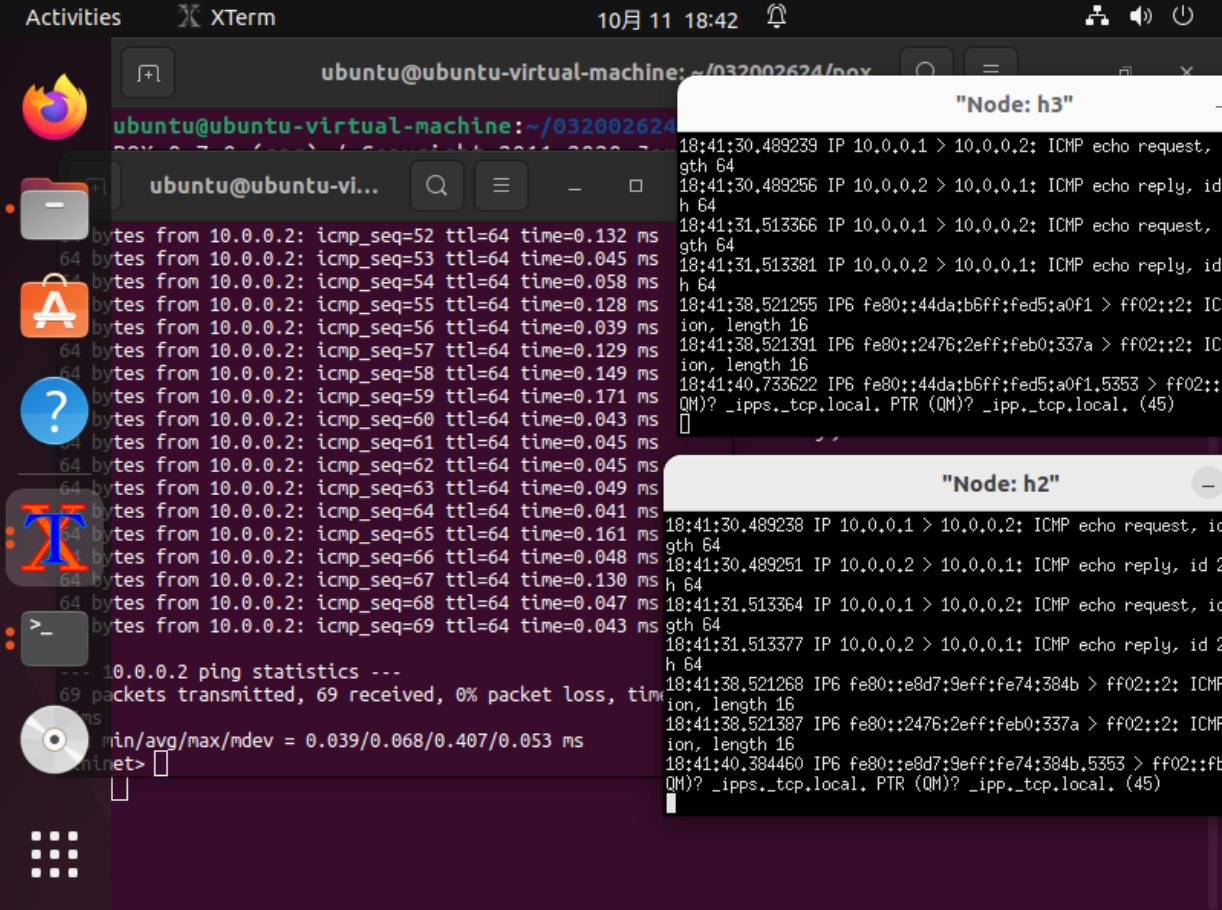
h1 ping h3
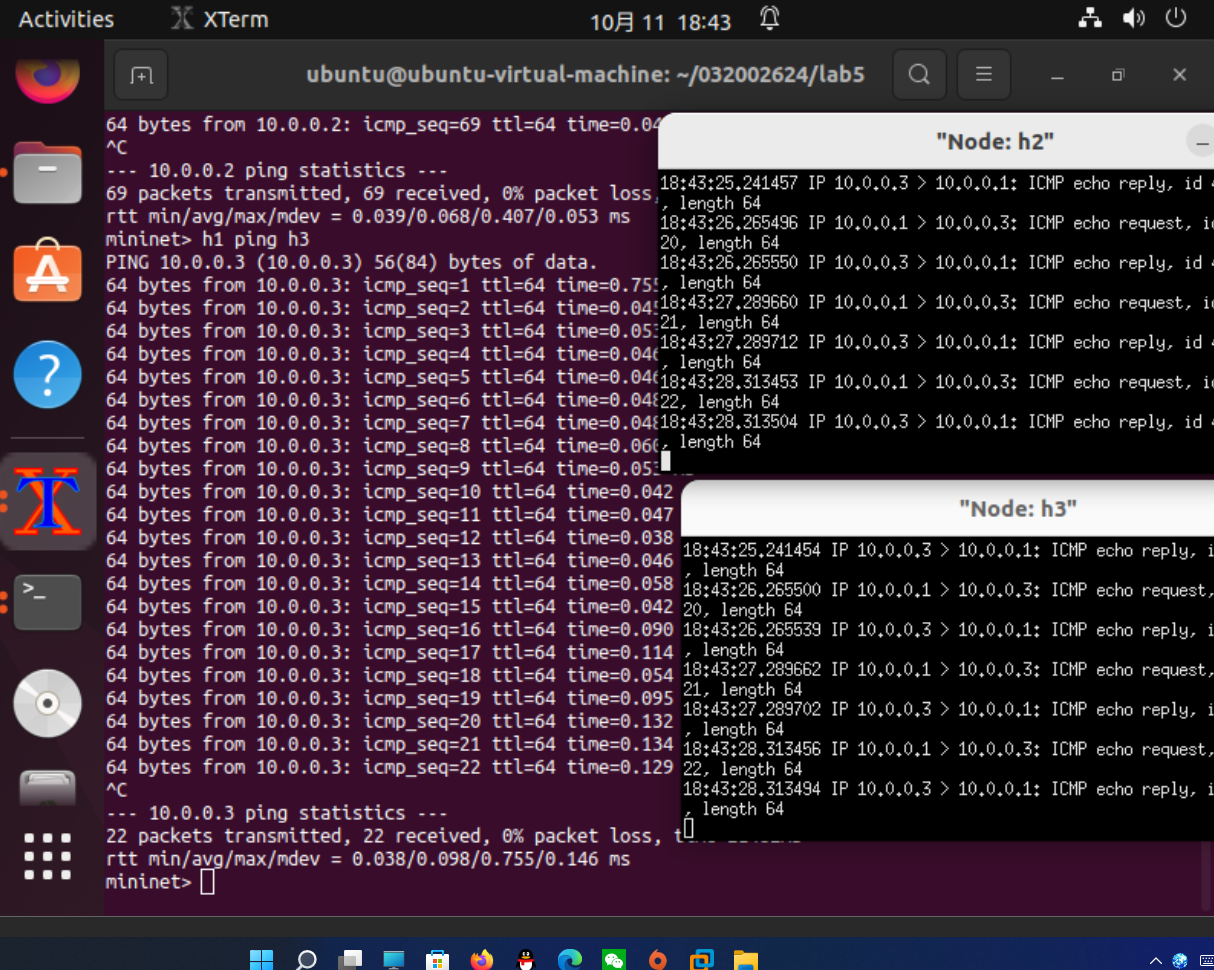
3. 阅读L2_learning模块代码,画出程序流程图,使用 tcpdump 验证Switch模块。
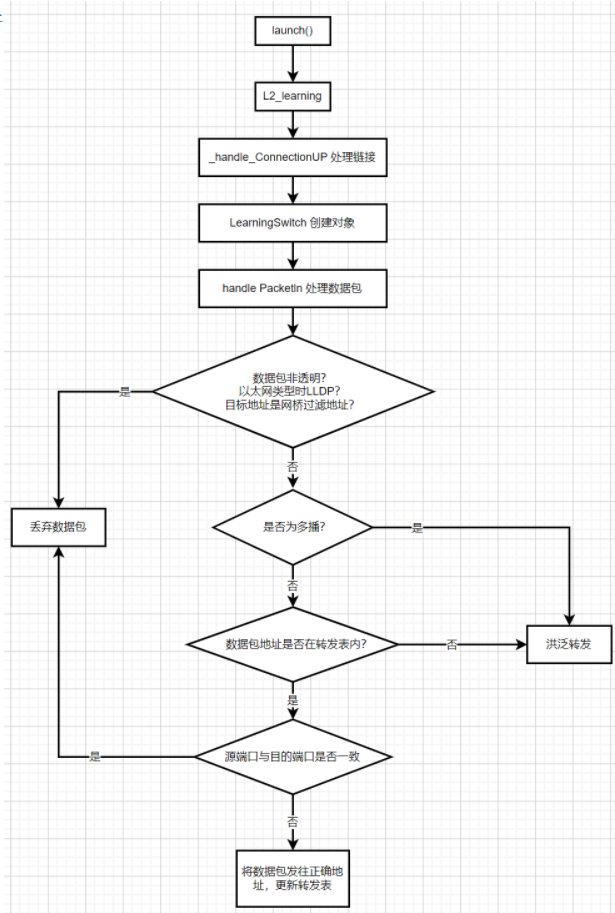
*开启pox,运行L2_learning模块
*h1 ping h2
*h2收到数据包,h3没有收到数据包
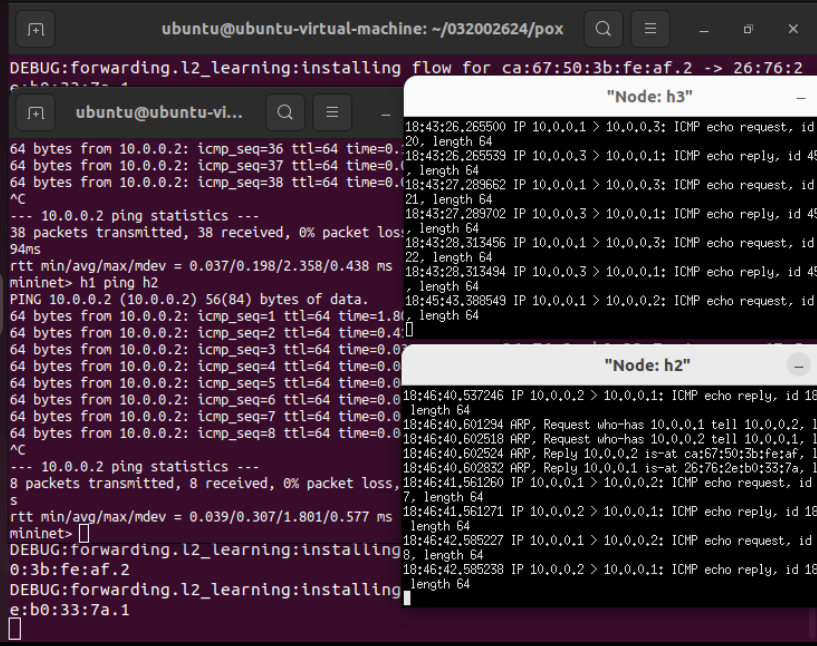
*h1 ping h3
*h3收到数据包,h2没有收到数据包
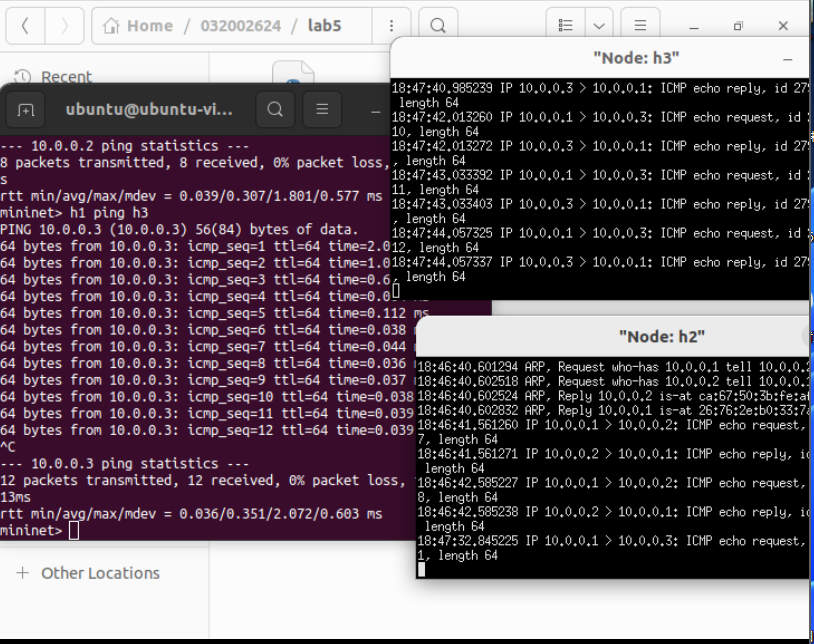
验证了Switch模块的功能:让OpenFlow交换机实现L2自学习。所以只有目的主机可以接收到数据包。
(二)进阶要求
1. 重新搭建(一)的拓扑,此时交换机内无流表规则,拓扑内主机互不相通;编写Python程序自定义一个POX模块SendFlowInSingle3,并且将拓扑连接至SendFlowInSingle3(默认端口6633),实现向s1发送流表规则使得所有主机两两互通。
*建立拓扑,并用dpctl del-flows命令删除流表
*编写Python程序自定义一个POX模块SendFlowInSingle3
点击查看代码
from pox.core import core
import pox.openflow.libopenflow_01 as of
class SendFlowInSingle3(object):
def __init__(self):
core.openflow.addListeners(self)
def _handle_ConnectionUp(self, event):
msg = of.ofp_flow_mod() # 使用ofp_flow_mod()方法向交换机下发流表
msg.priority = 1
msg.match.in_port = 1 # 使数据包进入端口1
msg.actions.append(of.ofp_action_output(port=2)) # 从端口2转发出去
msg.actions.append(of.ofp_action_output(port=3)) # 从端口3转发出去
event.connection.send(msg)
msg = of.ofp_flow_mod() # 使用ofp_flow_mod()方法向交换机下发流表
msg.priority = 1
msg.match.in_port = 2 # 使数据包进入端口2
msg.actions.append(of.ofp_action_output(port=1)) # 从端口1转发出去
msg.actions.append(of.ofp_action_output(port=3)) # 从端口3转发出去
event.connection.send(msg)
msg = of.ofp_flow_mod() # 使用ofp_flow_mod()方法向交换机下发流表
msg.priority = 1
msg.match.in_port = 3 # 使数据包进入端口3
msg.actions.append(of.ofp_action_output(port=1)) # 从端口1转发出去
msg.actions.append(of.ofp_action_output(port=2)) # 从端口2转发出去
event.connection.send(msg)
def launch():
core.registerNew(SendFlowInSingle3)
将拓扑连接至SendFlowInSingle3,实现向s1发送流表规则使得所有主机两两互通。
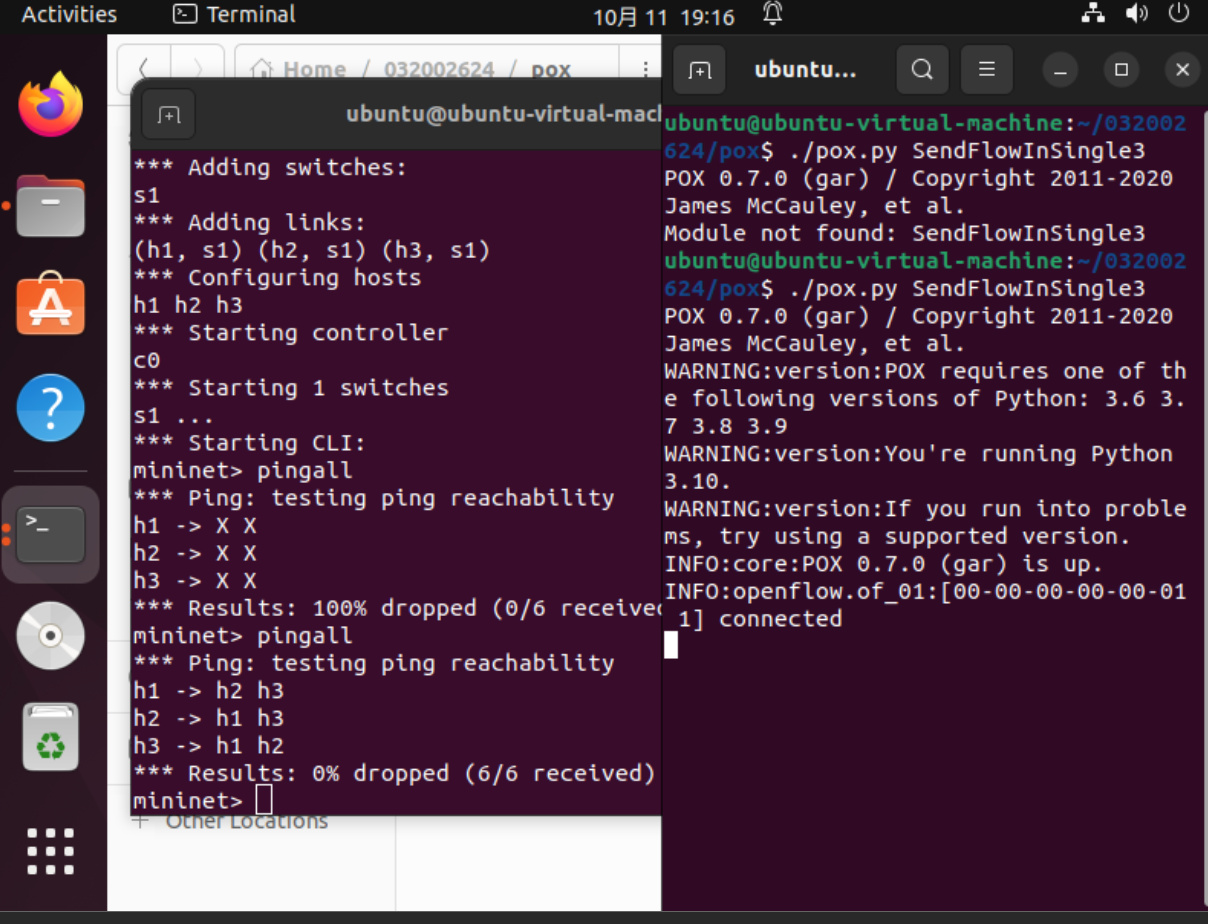
2. 基于进阶1的代码,完成ODL实验的硬超时功能。
*Python程序自定义一个POX模块SendPoxHardTimeOut
点击查看代码
from pox.core import core
import pox.openflow.libopenflow_01 as of
class SendFlowInSingle3(object):
def __init__(self):
core.openflow.addListeners(self)
def _handle_ConnectionUp(self, event):
msg = of.ofp_flow_mod() # 使用ofp_flow_mod()方法向交换机下发流表
msg.priority = 1
msg.match.in_port = 1
# msg.actions.append(of.ofp_action_output(port=2))
msg.actions.append(of.ofp_action_output(port=3))
event.connection.send(msg)
msg = of.ofp_flow_mod()
msg.priority = 1
msg.match.in_port = 2
# msg.actions.append(of.ofp_action_output(port=1))
msg.actions.append(of.ofp_action_output(port=3))
event.connection.send(msg)
msg = of.ofp_flow_mod()
msg.priority = 1
msg.match.in_port = 3
msg.actions.append(of.ofp_action_output(port=1))
msg.actions.append(of.ofp_action_output(port=2))
event.connection.send(msg)
def launch():
core.registerNew(SendFlowInSingle3)
*先SendFlowInSingle3再运行SendPoxHardTimeOut再运行SendFlowInSingle3,即先连接再断开再回恢复
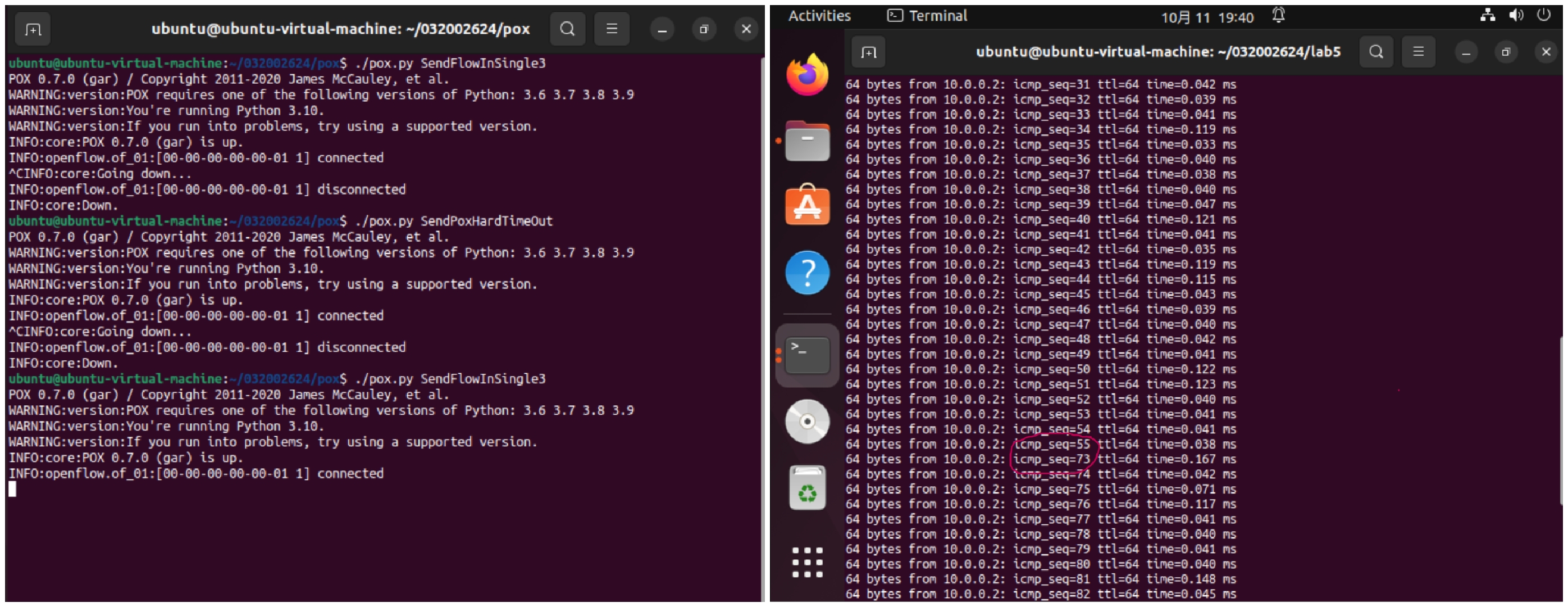
四、个人总结
本次实验,相对于上次的难度有所增加。在实验开始时,构建拓扑时遇到ping不通的情况,后来在查找资料后,发现要先运行pox。
进阶实验时,运行SendFlowInSingle3时老是报错,问了舍友也没有结果,后来重启一下,解决问题。







 浙公网安备 33010602011771号
浙公网安备 33010602011771号